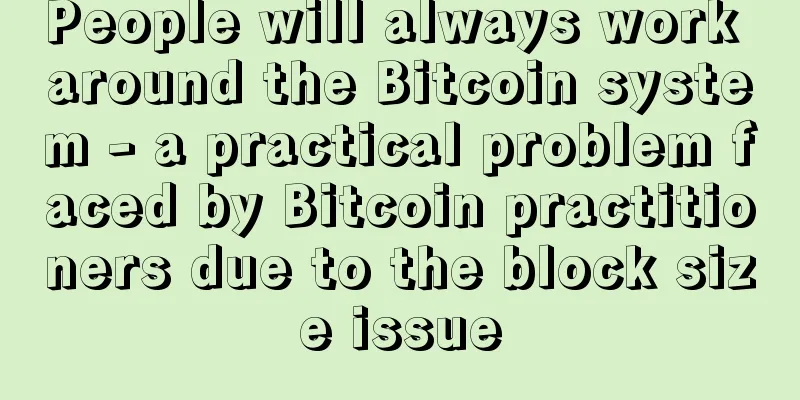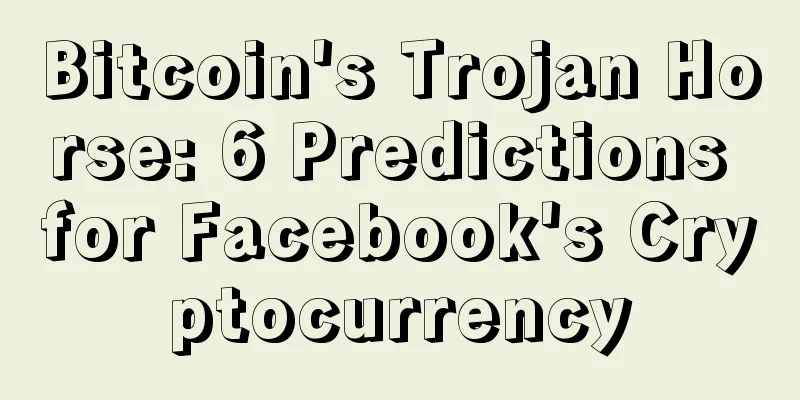How to find excess return opportunities from the upcoming Ethereum merger?

|
The Ethereum merger is one of the most important events in the industry. In addition to holding ETH flat, there are also opportunities for overinvestment. Author: CryPto33 First of all, let me clarify that I already have ETH-related positions, so there is a possibility that my head is determined by my butt :) Please focus on my analysis logic. As for related investment advice, you still have to think more and draw conclusions DYOR by yourself. In general, I think the merger of Ethereum PoW to PoS is a very important thing in the development of cryptocurrency after the Bitcoin white paper, or even the second most important thing . In fact, the entire market began to warm up to the merger of PoS after the Ethereum EIP1559 burning mechanism was implemented in August last year, but a year later, the progress seems to be slower than everyone expected. There is a lot of FUD in the market, and catching up with the big bear market, the price of ETH has not been affected too much by this event. In my framework, the Merger is a positive "grey rhino event" : it is very important and is often mentioned by the market, but market participants do not pay enough attention to the specific progress and medium- and long-term impact, or think that this is just a one-time event, and underestimate that it fundamentally changes the supply and demand structure of ETH and brings about a continuous inflow of funds. Therefore, ETH-related assets before and after the merger may have significant excess returns. The time point of the Merge completion is an important variable. As an investor with a non-technical background, I try to extract valuable information from public information. My preliminary conclusion is that it will happen in the time window of late September to late October . I would like to provide a reference for you and hope to get feedback. Finally, here is my experience of transitioning from a Tradi Fi investor to researching Crypto: Crypto research requires a comprehensive knowledge structure, which is very difficult, but there is sufficient public information in the industry, and practitioners are willing to share. At the same time, in the early stages of the industry's paradigm shift, in-depth exploration may seize the opportunity for excess returns and bring positive feedback. I would like to share this with you all, and I believe that whether you are a BUIDLER or HODLER in the industry, WAGMI:) The main analytical framework of this article: 1) Ethereum’s Merge, What, Why & Wen? 2) The impact of Merge on ETH 3) Related investment opportunities 4) Risks: further delay, merger problems, macroeconomic situation, and regulation
Part I: A) What's Merge The Merge is that Ethereum will adopt PoS (Proof of Stake) to replace PoW (Proof of Work) consensus mechanism. PoW and PoS are different means of achieving consensus. Participants in PoS need to stake 32 ETH to qualify as validators, which does not require a lot of computing power. Validators are randomly selected to create blocks and are responsible for checking and confirming blocks that are not created by them. Validators are rewarded for proposing new blocks and proving blocks they have seen. If you provide proof for a malicious block, you will lose your staked ETH. It is called a “merge” because ETH merges the beacon chain (consensus layer CL) with the existing chain (execution layer EL) and abandons the PoW part of the execution layer. B) Why Merge To quote Vitalik’s explanation: POS is more energy-efficient, has lower security costs to maintain, is easier to recover from attacks, and is more decentralized . https://vitalik.ca/general/2020/11/06/pos2020_zhTW.html In addition, after solving the technical problem of merging, Ethereum developers can focus more on long-term important issues such as expansion, sharding, and state management . Staking is similar to mining, but different in many ways. Mining requires significant upfront expenditures in the form of powerful hardware and energy consumption, which creates economies of scale and promotes centralization. Mining also does not require locking up assets as collateral, which limits the protocol's ability to punish bad actors after an attack. In contrast, the transition to Proof of Stake will make Ethereum more secure and decentralized. The more people participate in the network, the more decentralized it is and the less vulnerable it is to attack. After the merger, PoS can provide higher security at the same cost. In other words, PoS pays less block rewards to maintain the same security. C) Wen Merge Based on the public information I have collected, I think the most likely time window for the merger is the end of September to the end of October . Last Thursday (7/14) night, the core developers gave a specific date for the first time on Consensus-layer Call 91 #566: expected to be 9/19 (of course, it should be noted that technical developers are always optimistic, and the merger plan has been delayed many times in history) At present, the merger of the Ropsten and Sepolia testnets has been successfully completed, leaving only Goerli as the last testnet before the mainnet launch. The next one is the Goerli testnet, which is expected to be launched in late July or early August. The difficulty bomb in mid-June was postponed for about 100 days to the end of September. If the merger is not successful by then, the difficulty of mining will increase significantly, and the block time will be greatly extended, bringing security and user experience issues. The following are some of the important nodes from now to the implementation of Merge. You can judge the progress of Merge based on them: 1) First, prepare for the Goerli testnet Merge and officially implement it around August 11. 2) In the process of preparing Bellatrix, EF will release Paris and Bellatrix client updates in advance (estimated to be around August 18, and the recent ACD will be on August 18), and communicate the specific upgrade time of Bellatrix (based on the slot height of CL) (implying early September); 3) During this period, EF will announce the final official TTD (Teminal Total Difficulty) through the blog; 4) After the Bellatrix CL hard fork upgrade is completed (early September), wait for the miners' computing power on EL to reach the threshold of the announced TTD difficulty, and then the Pairs hard fork upgrade on EL will be launched; ideally, the Bellatrix and Paris upgrades will only wait for 1-2 weeks; 5) At the same time, the nodes on CL will start processing the transaction packaging on EL after TTD is implemented, and the merger of EL and CL chains will officially begin. The estimated time point is September 19. The above analysis contains a lot of my subjective judgments, and the actual progress will be full of uncertainties. Here I would like to emphasize again that the merger plan has been delayed many times in the past, and it is not ruled out that it will be delayed again this time :) But I believe that with the success of multiple tests and the resolution of remaining bugs, the final merger is not far away from us. Tim Beiko, the general coordinator of the merger, emphasized that only if a series of major bugs beyond imagination occurred during the testing process would the merger be postponed to 2023. The difficulty of the merge is largely (50%) because it has to be done instantly, which is like changing the engine of a high-speed aircraft. Part 2: The impact of Merge on ETH 1) Impact on the supply side: After the merger, the new supply of ETH will drop by 90% , which is often mentioned in the industry as equivalent to completing three halvings. Considering the burning mechanism of transaction fees (85% of the handling fees are burned), the ETH burned by the handling fees after the merger may exceed the newly issued ETH, bringing about ETH deflation. Therefore, we will see the largest supply-side readjustment of mainstream tokens in the history of Crypto: Before the merge, the ETH supply increased by 14,500 ETH/day , transaction fees burned 3,000 ETH/day , and the net increase was 11,500 ETH/day . After the merge, the ETH supply increased by 1800 ETH/day , transaction fees burned 3000 ETH/day , and the net reduction was 1200 ETH/day . After the Merge, the new supply of ETH decreased by 90% . At the current transaction fee burning level, ETH entered deflation (-0.35%)
The direct impact of the Merge on the demand side of ETH is limited, because the merger will only have a slight impact on Ethereum's network throughput and Gas Fee, and will not bring about a significant change in the amount of handling fees burned. However, its indirect impact will still be very obvious, mainly through the higher staking yield (Staking Yield) inherent in staking ETH after the merger to attract external funds to buy ETH . The inherent staking yield of ETH after the merger can be regarded as the "risk-free rate of return" in Crypto, and will be the anchor of Defi's yield; Defi/NFT Lego will build a richer combination on it. At the same time, the merged ETH will become an interest-bearing asset with a stable yield , which can be regarded as the highest quality "perpetual bond" in crypto. It can generate stable future cash flow , and can therefore be better valued, understood and allocated by traditional investment institutions using the cash flow discounting method. It should be emphasized that the ETH staking income is paid with the native token on the chain like other POS chains, not direct legal currency cash flow. However, due to the wide application of ETH in cryptocurrencies, especially in the field of NFT, it has been used as a pricing basis, so ETH has certain currency attributes and can be easily converted into legal currency. Specifically, the staking yield consists of three parts: Staking Yield = ETH block reward return + Priority fee return + MEV return A) The additional ETH block reward income received by staking nodes (Validators): At the current growth rate, it is estimated that there will be nearly 14 million ETH staked by the time of the merger, corresponding to an additional 650,000 ETH issued each year , that is, the additional issuance rate of return is about 4.6%. B) Transaction fees received by validators (priority fees) Transaction tips (proritiy fees) account for about 15% of the total transaction fees (the other 85% is burned to directly reduce the ETH supply), and are earned by miners under the current PoW mechanism. After the merger, the tips will be earned by the PoS staking nodes, increasing the node's income. This income is closely related to the transaction activity of the Ethereum network. When NFT was most active at the end of last year, the total transaction fee of the entire network could reach 14,000 ETH/day, while during the current market downturn, the transaction fee has dropped to about 4,000 ETH/day. Based on the current total transaction fee, the transaction tip rate attributable to the staking nodes (Validators) is about 1.5% . But remember that this rate of return is closely related to market activity. When the bull market is active, the transaction tip will increase significantly. C) MEV (Maximal Extractable Value) income obtained by staking nodes (Validators) ETH's MEV under the PoS mechanism will also be obtained by staking nodes (Validators). Based on the average MEV value of the past few months, the yield attributed to Validators can reach nearly 1%. D) In summary, the yield on staking is mainly affected by two factors: the total amount of ETH involved in staking and the level of Ethereum's transaction fees (MEV is also closely related to transaction fees) . In addition, considering that Ethereum's transaction fee burning mechanism will lead to a reduction in the supply of ETH, the deflationary factor will also increase the actual rate of return of the staking nodes (0.5% in my model). In my model shown below: the staking yield of the merged staking nodes can reach an annualized 7.5% , which is much higher than the current 4% staking yield. According to the traditional financial valuation method, the investment of the staking node in staking can recover all costs within 13 years at an annual return of 7.5%. Using stocks as an analogy, the price-to-earnings ratio (P/E) of the staked ETH is only 13X, which is cheaper than the long-term 18X P/E ratio of the S&P500. Non-staked ETH cannot obtain the above benefits, and must capture greater growth value in the entire system to cover the opportunity cost given up. Therefore, ETH users who have not participated in staking will consider whether to participate in staking to obtain a higher rate of return. More ETH participating in staking will reduce the supply of ETH in the market. At the same time, the higher the ETH staking yield is relative to the benchmark interest rate of the traditional financial market, the more likely it is to attract institutional funds to participate in the Ethereum ecosystem and pursue low-risk excess returns (Staking Yield minus USTreasury Yield). Similarly, funds invested in other tokens in the Crypto world will also consider the high staking returns of ETH after the merger. It is conceivable that a considerable amount of funds will be transferred from staking in other public chains to staking in ETH, which has a more favorable risk-return ratio. Therefore, after the merger, multiple funds will flow into the Ethereum ecosystem to participate in staking, increasing the demand for ETH. In the long run, the ETH staking ratio may increase from the current 10% to 20-30%, while the Staking Yield will gradually decrease. 3) From the perspective of capital inflow: A) Before the merger, there was a net increase of about 11,500 ETH in supply every day (POW issued 14,500 ETH/day - burning transaction fees of 3,000/day). Based on the current price of $1,300, ETH needs to continue to have $15 million in funds every day to keep the price unchanged , which means $450 million per month and $5.4 billion per year . After the merger, the daily new supply will be reduced by 90% . Based on the current transaction fee burning, the supply of ETH will be reduced by about 1,200 ETH/day . Based on the current price of $1,300, it is equivalent to a net "buyback" of 1.5 million US dollars every day , 45 million US dollars a month, and 540 million US dollars a year . When the bear market ends and the market regains its vitality, the active application ecosystem on Ethereum will consume more transaction fees (an average of 12,000 ETH/day at the end of last year), bringing stronger "buyback" support. B) In addition, the newly added supply before and after the merger is different from the actual selling pressure in the secondary market: POW miners will sell 85% of their ETH rewards on average to cover electricity and other expenses ; while POS staking nodes have very low fixed costs and basically no variable costs, and must hold ETH to participate in the next staking, so their motivation to sell the ETH staking income is much lower ( some studies show that staking nodes will only sell 10%-15% of the staking income on average ). Therefore, after the merger, the actual selling pressure of ETH traded in the secondary market may be reduced even more, reaching more than 95% . C) At the same time, an interesting observation is that the structural pressure of new supply of the top two mainstream currencies in the cryptocurrency industry (BTC and ETH) under the PoW mechanism has brought about strong cyclicality in the industry. In the long run, ETH after the Merge will experience the largest supply and demand structure adjustment in the industry's history. Its new supply will be greatly reduced or even deflationary, bringing a continuous inflow of funds into ETH, rather than just a one-time inflow. Therefore, it is a positive "gray rhino" event . This may change the strong cyclicality of ETH driven by the supply side, and the impact on the demand side will become more important. Ethereum will thus evolve to a stage of development where the prosperity of the application level is driven by expansion, bringing more new users and block space demand . The reasons why this merger is difficult to replicate are: 1) There needs to be a significant reduction in new supply due to the transition from PoW to PoS, while many other public chains already have a PoS consensus mechanism and will not experience such supply-side changes; at the same time, 2) a large amount of transaction fees are burned on the public chain (Ethereum's fees are more than 5-10 times that of other public chains ). The combination of the two can bring about a huge change in the supply and demand structure. D) Finally, let’s see what type of incremental funds will buy ETH after the merger? Based on the above analysis, I believe that the incremental funds will come from: a) funds pledged in other public chains in the cryptocurrency circle , b) part of the funds held in BTC exchanged for ETH , and c) traditional financial institutions pursuing stable returns . 4) Other impacts of Merge
Part III: Related Investment Opportunities A) The simplest way is to buy ETH and hold it and sleep on it B) Buy tokens of liquidity staking pools, such as Lido (LDO) : After the merger, Lido has undergone tremendous changes in fundamentals, and the protocol revenue has three benefits - increased ETH staking participation rate, increased staking yield, and increased ETH prices. At the same time, the fee side has been greatly reduced, because now the treasury provides LDO tokens as LP incentives for the Curve Steth-Eth pool. After the merger, stETH can be directly exchanged for ETH, and there is no need to use LDO incentives in the Curve pool. C) Long ETH Short Alt L1 tokens - Avoid macro risks to earn excess returns from pure ETH Merge events D) Buy ETH Call options or Call spreads that expire before the end of the year with a small amount of money (the strike price and expiration date are determined based on the period and impact of the Merger); note that this is similar to buying lottery tickets to gain asymmetric returns, so the amount invested must be controlled E) Buy stETH and earn a discount relative to ETH. The discount will gradually disappear after the merger and Shanghai upgrade. Part IV: Related Risks: A) Delay risk : Lack of communication between nodes and participants; User errors, client problems, application and service provider problems Part 5: Further understanding of Ethereum culture and other insights Through research on Merge (reading KOL and core developers’ tweets, bankless videos, relevant analysis reports, listening to/watching videos and minutes of the Ethereum Developer Conference, and visiting the Foundation’s website), I have a deeper understanding of Ethereum’s ecosystem: especially its commitment to decentralization, the diversity of its community, and its in-depth thinking on the long-term development of the industry . The crypto industry is still in its early stages, and there is still a lot of information asymmetry. As long as we ordinary people are willing to do more research and dig deeper, we can find information that is ignored by most market participants, and we can also find opportunities to generate excess returns. For example, I went to Youtube to listen to the Consensus-layer Call conference last Thursday night and looked for the minutes immediately after the meeting. I quickly found that they first mentioned the possible time of the merger: 9/19 |
<<: Will this mini-crypto bull rally continue?
>>: These ten cryptocurrencies are still worth your attention in the 2022 bear market
Recommend
Mole on the sole of right foot
Moles on the prominent parts of the face are most...
Blockchain digital cash platform Safe Cash receives $1.2 million in seed round financing
On September 30, Safe Cash Payment Technologies, ...
Nigeria's Central Bank Governor: Bitcoin is a gamble
The Governor of the Central Bank of Nigeria recen...
What are the facial features of people with murderous intent? Which types of people should not be offended?
Nowadays people attach great importance to making...
The palm reading of the stingy god of wealth
1. Big mouth with closed lips The first one has a...
What is the personality of a woman with a mole that cries her husband? A detailed explanation of the fortune of a woman with a mole that cries her husband
The Crying Husband Mole is located below the eye....
What does a mole on the neck mean?
What does a mole on the neck mean? Statement: The...
Do you know the face that clearly shows love and hate?
Everyone is special. Some people face what happen...
How do girls with square faces look more majestic?
In Feng Shui, one needs to look at a person's...
What do crow's feet on women mean?
What do crow's feet on women mean? 1. Women w...
Where is the marriage line on the hand? What kind of marriage line is best?
How to read the marriage line on your hand? There...
What is the fate of people with drooping eyes?
What is the fate of people with drooping eyes? 1....
Filecoin's liquidity solution - DeFil
Filecoin's unique mortgage mechanism brings t...
Is it good for a woman to have a mole on her ear? Is it good for a woman to have a mole on her ear? What does it mean?
What does a mole on the ear mean? Is it good to h...
The difference between almond eyes and round eyes. People with almond eyes have good fortune.
For a person, facial features often give people c...









